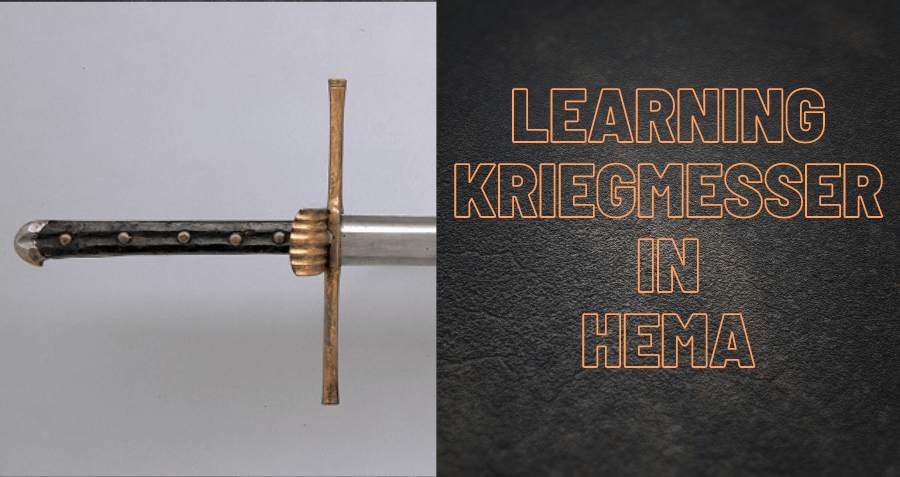Are you interested in learning how to fight with swords? Many people have a strong interest in swordsmanship as a result of their depictions in popular media such as novels, video games, movies, television shows, anime and comic books but you may be surprised to learn there are people who study how swords were used by historical fencing masters and train in these arts today. Historical European martial arts (HEMA), sometimes referred to as ‘Western martial arts’ (WMA), ‘Historical European swordsmanship’ (HES) or ‘Arts Martiaux Historiques Européens ‘(AMHE) is modern movement to reconstruct the lost martial traditions practiced in Europe based on surviving historical sources.
How to get into HEMA
If you are looking for how to get into HEMA swordsmanship martial arts then you must have someone to learn from and some practice weapons. There are many clubs around the world today which teach HEMA to people, and you can find these clubs via our HEMA Club Finder page. We list many hundreds of clubs based in the United States, Canada, United Kingdom and other parts of Europe, and elsewhere even the world. There are even clubs in Australia, Brazil and China.
The most important thing you will need to get into HEMA is to study swordsmanship techniques from a historical source of Western swordsmanship.
What is a historical source?
Most commonly a historical source is a manual of combat instruction that describes a system of martial arts. Many of the manuals studied in HEMA date to the Late Middle Ages (14th to 16th century) and Renaissance period but there are also those who study material related to Napoleonic and Victorian eras, too. Weapons such as knightly swords, longswords, greatswords (montante, sometimes mistakenly called a claymore) dussacks, daggers, sabers, rapiers, sideswords and smallswords are all very commonly studied by Historical European martial artists. The Learn HEMA section of our website provides an overview of the source material studied on these weapons.
Why do people study swordsmanship today?
Many people are attracted to the idea of studying how to fight with swords due to depictions in popular media. Television series and movies such as Game of Thrones, Highlander, The Princess Bride, Lord of the Rings, The Hobbit and many others have captured the imagination of many people. There are also gamers who play Final Fantasy, Dark Souls, The Legend of Zelda, Dragon Quest, Dungeons & Dragons, Pathfinder and World of Warcraft who think swords are cool and want to learn how to fight with them in the real world. Even Japanese anime nerds who are into Sword Art Online, Record of Lodoss War, Rising of the Shield Hero, Bleach, Overlord, Goblin Slayer, and Fate/ Stay Night may develop an interest in historical fencing after becoming a fan of these franchises. While many people are drawn into a love of swords because of their depiction in popular media there are also individuals who have an interest in military history that leads them to study the usage of antiquated military weapons such as swords to better their understanding of how warfare was conducted during these time periods. These history geeks tend to do a lot of very useful research for the rest of us to further our understanding of historical fencing and martial arts. Regardless of the specific reason, generally speaking people study HEMA because it is a fun hobby that provides excellent physical exercise. While it is doubtful that swords will ever have supremacy in the battlefield again, this weapon’s place in martial disciplines is solidified. Swords hold an important place in the human psyche and training a person to use one can both improve self-esteem and health.

Is this like some kind of medieval sword fighting sport?
It can be. There are many tournaments held around the world, with many athletes traveling internationally to attend them and test their skills against one another. These events can be very exciting to watch! Although there is a sport aspect to it, many people also just want a fun athletic hobby to do and are not as interested in high level competitions. So if this is something you’re not interested in you are not required to participate in the tournaments.
How you can get involved in HEMA
There are two primary ways to learn Historical swordsmanship,
- Joining a HEMA club near your geographic area.
- Independent study of a historical source using books, websites and online tutorials such as videos.
Join a HEMA club
There are historical fencing clubs in nearly every country on the planet, with more schools forming every day. These clubs come in two basic types;
- Study groups, which are often informally organized clubs where no one individual is experienced or skilled enough to be deemed a proper instructor and members research and practice material together collectively based on copies of original source manuscripts written by past masters.
- Schools which are formally organized and have experienced instructors to lead classes. Depending on the country and region these schools might be part of an organization or federation but many are also independent. Becoming a member of a club that is part of a larger organization often means becoming a member of that organization in order to study at the school.
Independent study of a historical source
This is how HEMA began, with groups of people who had no idea how to do historical fencing yet had a lot of passion for sword fighting! If they could start their own clubs from the ground up then so can you. One advantage you will have as a newcomer today that many of the older veterans did not is that you have access to more manuscripts with more supporting literature written about how to interpret them. So even if you don’t have a proper teacher to learn directly from you can still read their books and watch their videos.We have a dedicated article on how to learn HEMA when there is no local school near you, but we’ll give you the highlights of the article in the paragraphs below.
Check out our Learn HEMA section of our website for a guide to several major weapons that are studied within HEMA. Each sub-page that discusses a weapon will provide you a chronologically ordered list of what historical source material is available along with some minor commentary about it. This section should help you select what tradition of historical fencing you will want to study. Going the independent route means you will also need to purchase gear. Fortunately we have tried to make this process simpler for newcomers by writing an excellent guide on what you’ll need as a beginner in HEMA. Click here to read it. Lastly some of the larger schools offer online at home study courses, such as Academie Duello. These can be useful programs for distance learning historical European martial arts. You can also read our other Helpful Guides that provide more specific information about certain topics, ranging from how to clean your swords to a list of other useful websites about Historical European martial arts. Click here to read the Helpful Guides. We think it is also worth mentioning that you can join the official Historical European Martial Arts Resources forum to ask questions from others in the community. We are admittedly a relatively new website that has been created specifically to assist newcomers and make information more accessible to them so we don’t have a huge community on our forums yet but we expect this to improve over time as more folks such as yourself join it. Have any other thoughts or questions for us? Hop over to the forums and share your thoughts or leave a comment on this post. ***** If you’d like to learn more information about historical fencing practices please check out our Learn HEMA page for a guide to learning about the historical weapon that interests you. You can also find more guides we’ve written about other topics at our Helpful Guides page.
[/vc_column_text][/vc_column][/vc_row]

















9 Responses
Great to know. Love swords especially Medieval
Im up here in Wyoming. Wheres the nearest club
Are there any clubs in Tennessee?
Do you have to pay to join a club?
Are there any schools in Atlantic Canada?